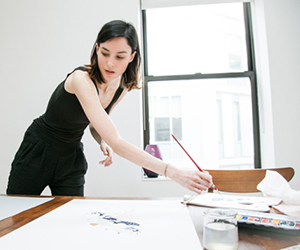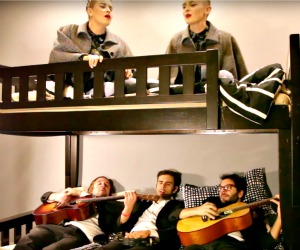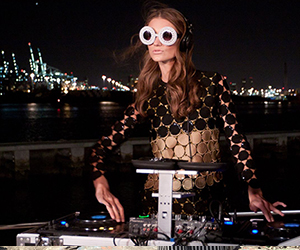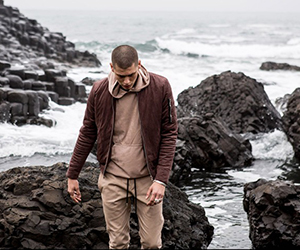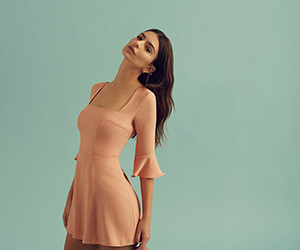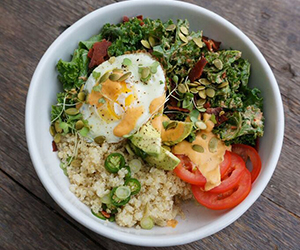
Loan Chabanol joins a short list of actor-artists such as James Franco (her co-star in the indie ensemble, Third Person) and Viggo Mortensen who have made names for themselves in both métiers, balancing them with aplomb and seamlessly transitioning from one to the other.
Having concluded a successful solo exhibit in New York’s Lightbox Gallery this past fall and now gearing up for another solo show in Shanghai, as well as prepping her directorial short film debut to be shot in Paris in the spring, Loan (pronounced LOW-ahn) has a lot on her plate. And that’s just the way she likes it.
The Paris-born multi-hyphenate of French, Vietnamese, German, and Italian descent recently moved to Los Angeles from New York and shares with LA CANVAS her process, her favorite stomping grounds in the city, and why painting is like meditating.
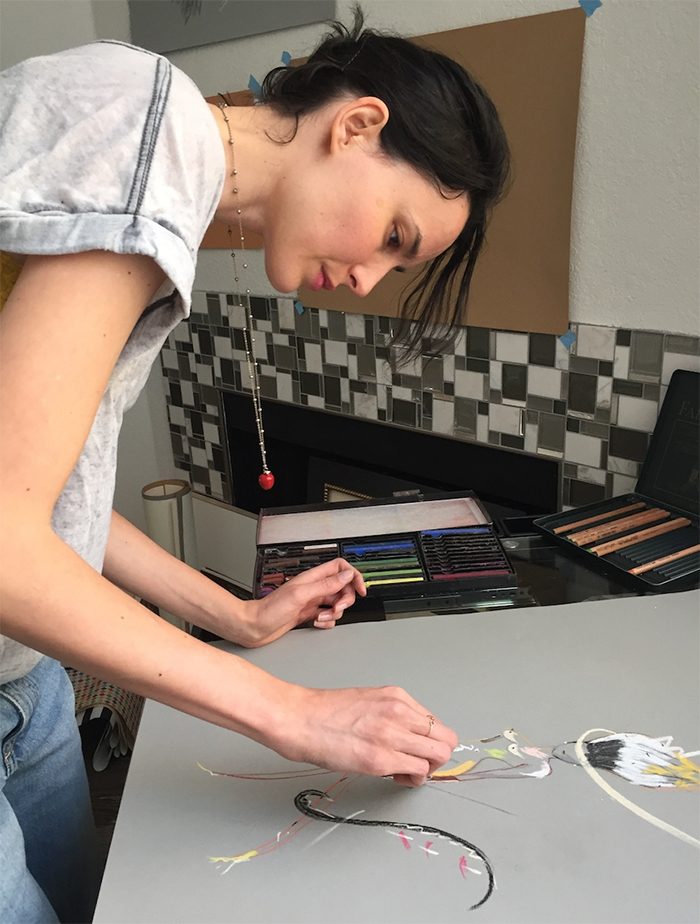
Being an artist affords you the opportunity to create whatever you want, whenever you want. It’s an autonomy that most actors don’t have, subjected to the decisions and whims of filmmakers and casting directors as well as other variables beyond their control. Do you feel that these balance each other out?
Interesting question. I think it’s two different things. There’s a feeling of freedom when you’re able to portray your character with a lot of honesty. I guess that’s the same feeling that you get when you’re able to create something that comes out of your heart. With acting, you have to serve the vision of the scriptwriter or the director, so you have to [conform] to their vision. But when you create art, it’s a different feeling, because you know exactly what you’re doing and you do have more control, for sure. You can change anything whenever you want, because it’s you who created it.
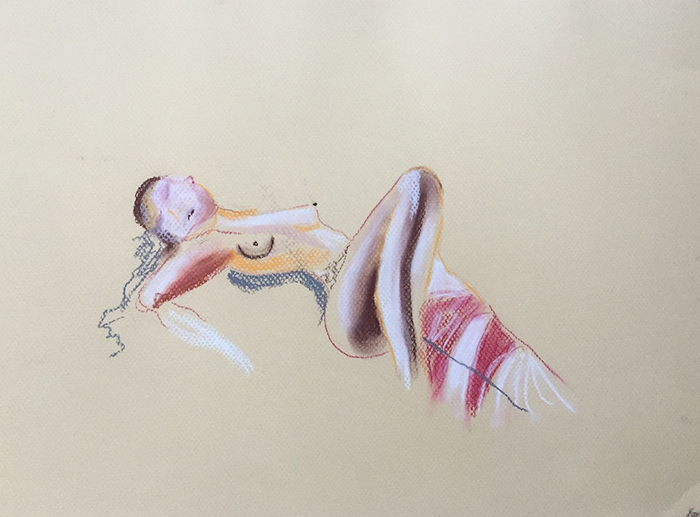
What is it about art that stimulates you?
I feel like it’s a meditation. I feel like I’m not thinking. I feel it clears my mind. I don’t think about good or bad, so I come to a place of total peace within myself. Automatically, I don’t have fears, so I can do anything, really.
You’ve had a thriving career as a professional model since the age of 16. What prompted you to make the transition to acting? What attributes from modeling have you used to help you with both your art and acting?
Modeling never defined who I was; I became a model by chance. I was able to travel and meet all these wonderful people and have all the experiences I’ve had. Modeling was not a choice, but I learned a lot from modeling. I learned a lot about my body. I was really young when I started, so it gave me a better knowledge of how to move, how to be, and all that, so I was able to bring that into my acting, for sure. I remember the first time I walked into an acting class, I had to leave a lot of things from modeling at the door. Because you can’t be too conscious about yourself when you’re acting. You have to just really feel free, you know. It depends what role you’re playing, if you’re playing someone seductive, then being a model was helpful, but for all the rest, no.
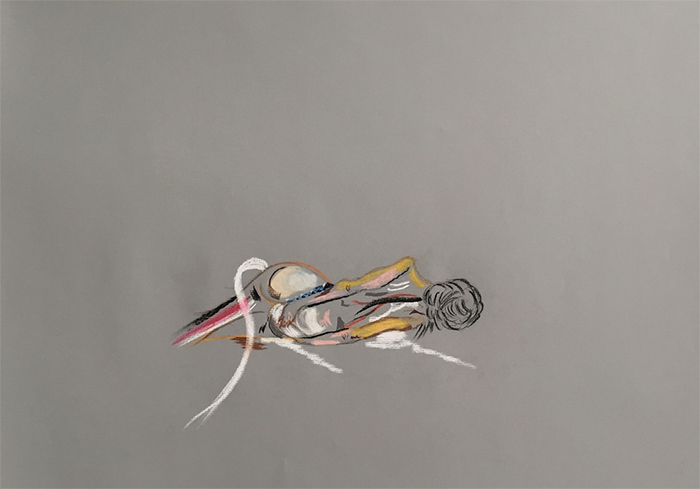
What do you think of the art scene in LA? How is it different from NY?
I just moved to LA two months ago. It’s interesting. I’ve been going a little bit everywhere, discovering local art. I went to Art Walk with my friend who took me there, and I was able to have a better understanding of what people are doing here in LA. I find it very interesting. It’s very far from what I do, but there’s something about it that I like. There’s a lot of freedom here that I haven’t found anywhere else. It’s very much [oriented] to street art, which is different from what I do, but it’s inspiring.
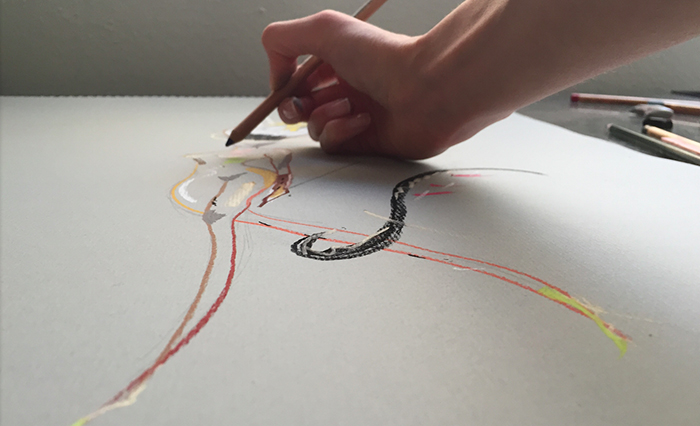
What is your process like as an artist, from conception to realization?
I just know how to be present now. When something inspires me, I can start a project now and work on it for some time and then leave it on the side if something else attracts my attention, and then take that project on again later. The pastel nudes I’m working on now, three of them I have in collection, I did four years ago. I did it because it was the easiest way for me to use pastels, which was something I never used before. When I moved to LA, I looked at them again as I was unpacking my boxes and I was like, “Oh, I really like them. What if I do another one? And I ended up with a couple more and now, I’m really getting to the core. And now, new characters are coming on paper that I wasn’t planning on, and they’re just coming to life by themselves. I pre-see them on paper, like I want a woman who’s going to be lying down, like that’s the base of direction, or I want a woman who just has one leg up, but when I start to draw, I don’t know where it will take me. I just let it be and trust that instinct.
The art you have publicly exhibited so far represents a range that most contemporary artists lack. They tend to stick to one genre or style, especially when it’s successful, for pragmatic reasons. Real ET and Born in Blue are different yet share a common theme of being liberated, either from self and the personal issues one deals with, or from the shackles of one’s past. Your series of nude pastels evinces a shared pathos that’s equally captivating. Are you conscious of these thematic threads in your art?
Yes, I was thinking about this yesterday. I’m using different media in every project I do, but the core is always the same. I will always have the same feeling of a single character that will come to life in different ways. I let my mind and my heart totally free to use the different textures in each media, but the core and idea of each character is always the same, they want to just grow and not stay the same and thinking that you know everything and to just let yourself be surprised by what you don’t know and what you can learn from it as a human being. I like transformation. I’m fascinated by transformation. By a cocoon that’s gonna become a butterfly, and the time it spends inside before it becomes a butterfly, what happens inside.
Your use of negative space in your oeuvre is something not enough artists employ. There’s an inherent power in it that we don’t often see in contemporary art. “Blue Whale” from Born in Blue exemplifies this beautifully. How did this technique become a principal tenet of your work, and what do you feel it brings to the actual piece itself?
It’s funny, I met someone two days ago who was like, “Why is there nothing behind your drawings?” And I said, “It’s really funny you say that, because there’s a lot behind it.” That is the negative space, it’s a space you create, a space of peace, of action, of rest, of whatever you want it to be, and you put a character on it and the feeling that you get from the character will tell you exactly what that negative space means, from your point-of-view. But that space is made for you to imagine something that you don’t see, so basically I’m telling you, “Don’t use your eyes. Use something else.” Because eyes can lie sometimes. They usually see truth, but I feel that not everything is made to be seen, it’s made to be felt. And we live in a society where everything is far from being felt anymore. I like to leave the choice to the audience to choose what they want to see, not what they should see.
You’re a new Angeleno. What do you like most about living in LA? Describe a typical day.
Nature. I like to wake up early. I go to bed at nine and wake up at five. I wake up with the sun. I guess growing up, half of my childhood in the South of France is something I really missed. And moving to LA really brought me back to connecting to the earth. So I feel like, I’m waking up with the sun, I’m taking time to draw, in the morning usually, because it’s quiet. Then I do my yoga, and I have meetings during the day. If I can, I go to the ocean, because I’ve spent too many years working in Paris and New York, I was too far from the ocean. This morning, I took a hike in Malibu and saw that huge immensity of water, and I was like, “Earth is water.” And I’ve been so far from it for so long, but I was always searching for it. Living in big cities, I got disconnected, sadly, from it. And I’m a little bit of a wild person, so I always wanted to be connected to it, but I was just in the wrong place. So being in LA is really magical, because I’m able to find those places very quickly. If I want to be in nature, I can be in nature anytime and really connect to the planet. And that’s a magical feeling.
Let’s shift focus to acting for a bit. What kind of characters would you like to portray? Any filmmakers or actors you’d like to work with?
I always liked odd characters that don’t fit the society. Playing an outsider would be very interesting to me. Anything that’s very different, I would love to play. I always dreamed of playing a man, but I did it already (ed. note: Loan portrayed Buster Keaton in a short film that James Franco directed as part of an art exhibition in London). And actors, like Tom Hanks and Meryl Streep and Denzel Washington. They’re all at the core, very similar and true and solid and attractive to me. Any actress can learn a lot just from one day of shooting with any of them. A lot of directors from different genres. I like Terence Malick, but in the old days. I love Tim Burton for many reasons, because he’s an artist. I love Angelina Jolie. I saw her last movie (By the Sea). That woman deserves a lot of credit for what she does and the heart she puts in it. I think the heart that you put into a project means everything. It doesn’t automatically mean the movie is gonna be successful, but what you put into it and where it comes from is the most important. You’re not in control of whether it’s gonna work or not; you’re never in control. You just have to be as honest as you can.
What’s next for you?
I’m gonna be directing my first short film, based on the nude pastels I’m working on right now, based on one of the characters that I really like and would like to portray. She will be representing Earth.
…..
Follow Loan on Instagram (@loancha) and check out her website (loanchabanol.com) to learn more about her art and to keep abreast of her latest projects.
Photography by Ana Ramos
Featured Image via W Magazine

